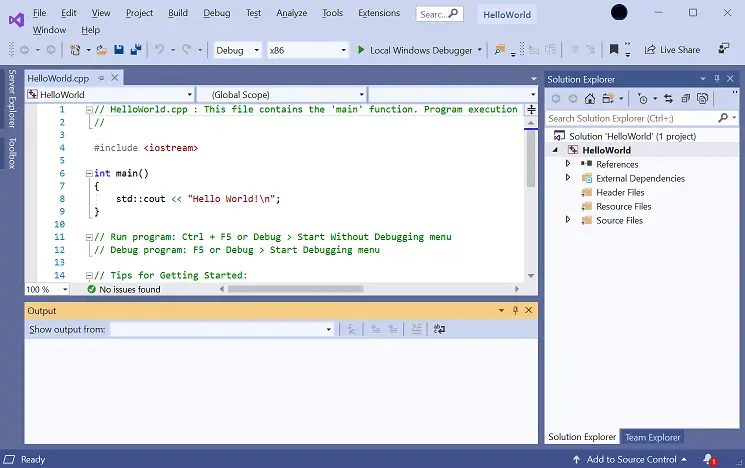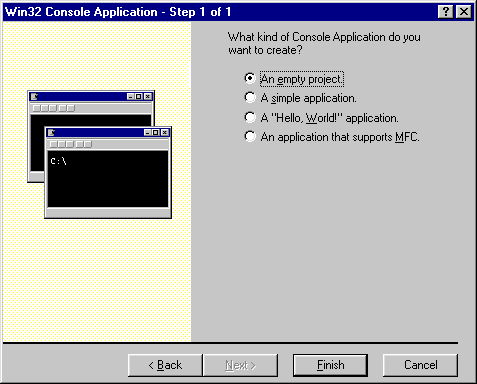- How To Start A New Project In Dev C Renew Jungle Build
- How To Start A New Project In Dev C Renew Jungle Online
- How To Start A New Project In Dev C Renew Jungle Key
You probably have to create a project first and add the file to it, IDEs don't like files that are not part of a project. Also Dev-C is not a compiler, it is an IDE and compilers don't run code, they just compile it. – nwp May 7 '16 at 13:25. In this walkthrough, you create a basic, 'Hello, World'-style C program by using a text editor, and then compile it on the command line. If you'd like to try the Visual Studio IDE instead of using the command line, see Walkthrough: Working with Projects and Solutions (C) or Using the Visual Studio IDE for C Desktop Development. To create a project click on File = New Project. A dialog window appears. Click on C Project = Console Application. Give the project the name, for instance, Practice11a, and save it in a new directory on your home drive. The file Practice11a.dev is created, and the name of the project appears on the left side of the screen.
I was searching for alternative for Turbo C++ and I found out a very good IDE “Dev-C++”. Unlike turbo c++, It has enough user base & supported by libraries/developers, help is available on many programming forums.Also many game developers use Dev-C++ as their back-end IDE.In next few articles,you will learn a lot about Dev-C++.In this article i have focused on introductory part of Dev-C++.
About Dev-C++
Dev-C++ is a free integrated development environment (IDE) for programming in C/C++. Dev-C++ is developed by Bloodshed software. It is shipped with the open source MinGW compiler. MinGW uses GCC,the GNU g++ compiler collection. With Dev-C++ you can write Windows or console-based C/C++ programs easily, you can even create installer for your application. Dev-C++ is hosted on Sourceforge. Current available version is 4.9.9.2(i.e Version 5 Beta). There is no news of recent updates for this IDE. Also Dev-C++ runs solely on windows, linux port no longer exists.
Update: There is a development team that has taken Dev-C++ IDE added few extra features like support for multiple compilers and Wxwidgets RAD port.This IDE is renamed as wxDev-C++.
Getting Dev-C++
You can downlaod Dev-C++ officially from Bloodshed or other mIrros like this.You an even purchase Dev-C++ CD-ROM that offers source code and examples alongwith the Compiler.
Get CD from Bloodshed Store Here : http://www.bloodshed.net/ordercd.html. To download Dev-C++,point your browser to http://www.bloodshed.net/devcpp.html .


Install Dev-C++
Follow the above mentioned link to download the most recent yet “beta” version of Dev-C++. When the installer offers to start Dev-C++ and will ask you some questions the first time you use it. Choose the default options.
You should let the installer put Dev-C++ in the default directory of C:Dev-Cpp, or put Dev-C++ in a simple location, such as D:Dev-Cpp. Avoid using folders and file names with spaces, as it will make it easier to later install add-ons or upgrades. Don’t put your own code inside the Dev-C++ folder. You may lose your work if you have to reinstall Dev-C++. You can create separate folder with name “Code”. You can later locate this directory with environment options.

Configure Dev-C++
Create a folder in Windows where you will keep all your code, e.g.,D:/fun/code. Now start the Dev-C++. In Dev-C++, click on the Tools menu and select the Environment Options menu option. Click on the tab labeled Files & Directories. click on the small “folder selector” icon next to User’s Default Directory field. This will open a file dialog box that will let you navigate to and select your code directory. After you have found and selected your directory, click Ok to choose it, then click Ok again to close the Environment Options dialog box.
How To Start A New Project In Dev C Renew Jungle Build
Now in order to use debugger with our programs we have to modify some settings.In Dev-C++, click on the “Tools” menu and select “Compiler Options”. In the “Settings” tab, click on “Linker” in the left panel, and change “Generate debugging information” to “Yes”. then click Ok again to close the Settings dialog box.
Using Dev-C++
Like any other Compiler,Dev-C++ has option for creating project. This project file contains settings and all the related file information related your application. To create project you have to do following steps.Go to the “File” menu and select “New” then “Project.”. This will bring new dialog box for project properties. Choose “Empty Project” and then check “C++ project” or “C Project” as per project. Give a good name for your project and Click “Ok”. Dev-C++ will now ask you where to save your project.Give the right direction for your code directory then click on save.
How To Start A New Project In Dev C Renew Jungle Online
If you want to work with source files then Go to the “File” menu and select “New” then “Source”. Here you will not be asked to save the file by compiler until and unless you compile or save file or exit Dev-C++.
DevPaks
DevPaks is the most famous extention of Dev-C++. Devpaks are usually libraries that contains GUI utilities,Toolkits,Compression libraries,Graphic libraries etc. Devpaks for famous toolkits like Wxwidgets, GTK,python, OpenGL are also available.There are many devpaks available for more advanced function use. These packs contain precompiled version of the library,so that any new user can download & develop without having to worry about library. Devpaks’s website has a list of paks in various categories.
Help & Support
If you have any questions or bugs then you can get your answers from Bloodshed FAQ.If you are not satisfied then you can get your questions answered from Aditsu FAQ.
Please don’t ask about homework problems in c++ or other stuff.If you found any bug or have problems with compiler post it on bloodshed website. If you have any suggestions & corrections, please do not hesitate to post it here.You can request for tutorial regarding “How to do this in Dec++” etc, but i suggest reading FAQ before posting small stuff here.
How To Start A New Project In Dev C Renew Jungle Key
More articles about Dev-C++ are coming soon,so keep reading.